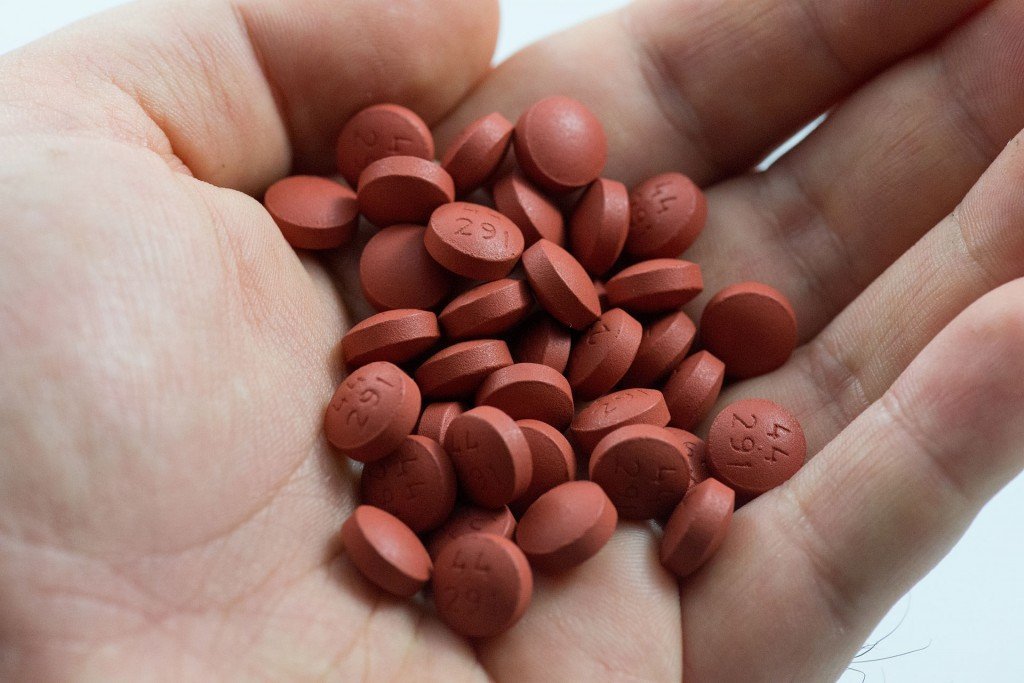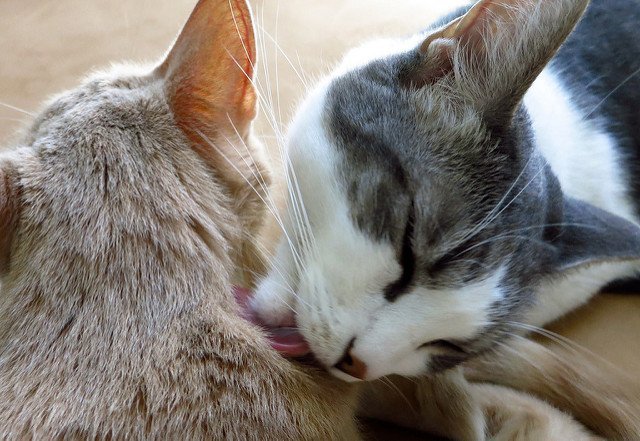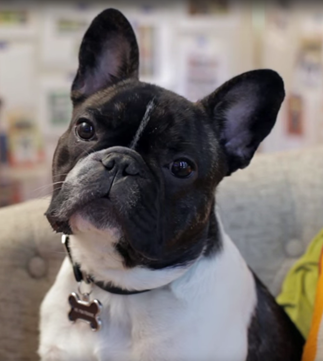 Accidental poisonings are one of the most common reasons pets are rushed to the veterinarian. Unbeknownst to many pet parents, lurking around the home are many substances toxic to pets. Almost every room contains some seemingly innocuous poison, so it’s important to be aware and appropriately pet-proof your house.
Accidental poisonings are one of the most common reasons pets are rushed to the veterinarian. Unbeknownst to many pet parents, lurking around the home are many substances toxic to pets. Almost every room contains some seemingly innocuous poison, so it’s important to be aware and appropriately pet-proof your house.
Watch for these symptoms of accidental poisoning in dogs and cats:
- Vomiting and diarrhea
- Confusion or disorientation
- Excessive drooling
- Loss of appetite
- Weakness and lethargy
- Seizures
If you suspect your pet has ingested a toxin, call your local emergency vet clinic or a pet poison hotline. An operator will guide you through any necessary at-home treatment, such as inducing vomiting, and determine if your pet requires medical care. Never hesitate to contact the professionals if you’re unsure – better safe than sorry.
1. Ibuprofen

Ibuprofen reduces inflammation in dogs, but can also cause death.
Pets in pain may be prescribed small doses of ibuprofen by a veterinarian. Although ibuprofen is a minor medication to humans, even a small amount can have deadly consequences for dogs, and cats in particular. Never administer any medical treatment to your pet without instruction from a professional. Pets’ bodies are built differently, and small animals are more susceptible to ibuprofen toxicity: the smaller the the pet, the smaller the lethal dose, too.
Too much ibuprofen for dogs and cats results in a damaged stomach lining and potentially kidney failure. Watch for vomiting or diarrhea – often containing blood – as well as loss of appetite and fatigue. Untreated, blood loss will eventually cause fainting and death. Keep ibuprofen in pet-proof containers out of paws’ reach; add a locked medicine cabinet to the protective measures if you’ve got a real troublemaker on your hands.
2. Houseplants

Before you bring that bouquet of spring blooms home, check that it’s cat-friendly!
Indoor plants are a common cause of accidental poisoning, especially for felines. Curiosity can kill a cat, especially if the flora is consumed in secret; successful treatment depends on identifying how much and how recently the toxin was eaten. Lilies can shut down a cat’s kidneys within hours, quickly followed by death. Irritation and swelling of the mouth and muzzle are the primary symptoms of plant poisoning in pets, along with excessive drooling and itching of visibly irritated skin.
If your pet shows a penchant for consuming blooms, you may have to mark anniversaries and other special occasions with less flowery displays. Many plants poisonous to cats appear in bouquets, like chrysanthemum, peony and primrose. Even the foliage and greenery included with many arrangements can be toxic: eucalyptus, boxwood, foxtail, ivy and magnolia are toxic to both dogs and cats.
3. Grapes and Raisins
Keep the trail mix and fruitcake out of pets’ paws! While the exact toxin has yet to be identified, vets are clear that grapes and raisins are poisonous to pets. Sudden kidney failure can arise, although symptoms depend on how much was ingested. Pay attention to your pet’s urine output and frequency of urination as well, both indicators of kidney health.
Act quickly to save your pet’s life – once toxins are absorbed into the body’s bloodstream, the only course of treatment is to flush them out. Activated charcoal or hydrogen peroxide may be recommended for use by your vet, but never administer any substances without professional instruction! Hospitalization is typically required to intravenously re-hydrate the animal and monitor kidney function. Pets who survive grape or raising poisoning may need dialysis to support their kidneys during recovery.
4. Human Prescription Meds

Use child locks on drawers and cabinets to keep nosy pups out of human prescriptions.
Over 50% of Americans are now taking at least one prescription medication, with the results a rise in pet poisonings. The Pet Poison Hotline reports that half of its calls involve an over-the-counter or prescription medication for humans. Dogs can chew through bottles to access pills or liquids, in addition to opening cabinets and drawers unprotected by child locks.
Antidepressants can overstimulate animals’ nervous system, causing seizures, sedation, shaking and elevated heart rate. Human medications used to treat ADD/ADHD have similar effects when ingested by pets, especially those containing amphetamines. Sleeping aids can prove fatal if eaten in even minimal amounts, as they disproportionately affect pets’ smaller bodies. Treatments for human heart conditions, including ACE inhibitors and beta blockers, may lead to dangerous drops in blood pressure if consumed by dogs.
Take small steps to reduce your pet’s risk of prescription medication poisoning! Keep all pills in secure containers rather than plastic baggies, which are easily torn or chewed up. If you use a weekly pill sorter, avoid leaving it on your bedside table or bathroom counter where it’s easily accessible to curious paws. Same goes for purses and backpacks if they contain meds.
5. Spring Flower Bulbs

Fido can look, but no touching! Many spring flowers like tulips are toxic to dogs.
Winter weather can erode the topsoil in flower beds, exposing bulbs planted last fall. Dogs may also dig them up, although bulbs prove a not-so-tasty snack that results in nausea, vomiting and diarrhea. Hyacinth and daffodil bulbs have an outer coating of crystals that irritate the mouth, causing excessive drooling. If eaten whole or in large amounts, irregular heartbeat and breathing can arise; in this case, visit your nearest emergency vet for treatment.
Avoid ruining your garden – and your dog’s day – by planting at a depth two to three times’ the bulb’s height. Tulips and daffodils are typically best buried six inches deep, while smaller spring blooms may lie only three or four inches below the surface. Don’t leave your dog outdoors unsupervised, and consider investing in a dog run or fence system to protect your plants and pet.
6. Bread Dough

The yeast in raw bread dough will continue to rise in a dog’s stomach if eaten, causing dangerous bloating.
If there’s a baker in your household, bread dough toxicosis is a seemingly random but very real threat. Many homemade baked goods contain yeast, a fungus responsible for the “rising” process. This occurs through a chemical reaction, as the yeast feeds on flour and sugar, releasing bubbles of carbon dioxide that are captured in the sticky dough. A rising loaf is typically left out on the counter, vulnerable to inquisitive paws.
After a dog deviously devours your loaf-to-be, it continues to rise inside the stomach – a warm, oxygen-free environment is perfect for promoting expansion. Unfortunately for pets, this poses two problems. The most obvious issue is of space: an inflating wad of dough quickly brings a dog’s stomach to capacity. Bloating increases risk of gastric-dilatation volvulus (GDV), or stomach twisting and rupture, especially in large breeds of dog. Another complication caused by bread dough is alcohol poisoning; as the yeast ferments, it releases ethanol as a byproduct.
7. Coins
Zinc is present in many metal U.S. currencies, as well as other small objects like screws. If a pet chomps on some spare change – especially pennies – zinc poisoning can result. Entering the bloodstream through the stomach, zinc destroys red blood cells and damages the liver, heart and kidneys. Without removal, coins can also cause intestinal obstructions in dogs.
Look for unusual symptoms like yellowed or pale gums and discolored urine, indicators of liver and kidney damage. A penny quickly becomes very expensive, requiring emergency treatment to remove endoscopically as well as fluids to support damaged kidneys. Zinc is a very corrosive metal, and medications are often needed post-poisoning to “coat” and protect the stomach. If your dog has developed anemia, an iron deficiency, blood transfusions may be required as well.
8. Flea and Tick Medications

Felines’ meticulous – and mutual – grooming exacerbates the effects of flea and tick medication poisoning.
Preventative flea and tick medications fall into two categories: all-natural Pyrethrins and synthetic Pyrethroids. Plants from the pyrethrum species, such as Chrysanthemums, provide the basis for Pyrethrin flea medicines. Pyrethroids are artificially created but longer-lasting and often stronger. There are numerous benefits to warding off fleas and ticks, vectors of misery and disease, but apply too much of a good thing and the outcome can be disastrous for pets.
Cats in particular are susceptible to flea and tick medicine poisoning because of their smaller size, fluffier coats, and extensive grooming habits. A common mistake pet parents make is using products designed for dogs on felines, leading to an overdose. Mild reactions to flea and tick medications include excessive drooling, flicking paws or ears, vomiting and diarrhea. In more serious cases, muscle twitching or tremors, hives, excessive itching, and difficulty breathing may be present. Work with your veterinarian to find the correct dosage of flea and tick preventative for your pet to prevent future poisoning!
 9. Nuts
9. Nuts
Although their specific toxin is unknown, macadamia nuts can be deadly to dogs.
While there’s little evidence nuts are harmful for felines, as a rule dogs should generally avoid them. Peanuts are the one exception, although their high fat and fiber can still cause gastrointestinal upset. Other kinds of nuts, including almonds, cashews and pistachios, are not necessarily toxic but may lead to pancreatitis in dogs as part of a fatty diet.
Walnuts, hickory nuts and pecans are too large for dogs’ digestive systems, potentially creating intestinal blockages. Macadamia nuts, similar to grapes, are mysteriously toxic to dogs but can cause neurological issues like tremors and temporary paralysis. If your backyard has nut trees, keep Fido away from the fallings; consuming moldy walnuts or other types puts your pet at risk of consuming a neurotoxin originating in fungi.
10. Magnets
As veterinarian Dr. Eric Barchas notes, strong magnets can cause intestinal perforation in pets. “Weak ordinary refrigerator magnets are not necessarily any more dangerous than any other potential foreign body,” he wrote for Dogster. “The magnets I’m talking about in this post are so-called rare earth magnets. In particular, neodymium magnets are noted for the danger they pose to dogs.”
Magnets can also lodge in place inside the animal, obstructing gastrointestinal blood flow. Pieces of the intestines stuck between magnets wither and die, falling away and spilling their contents into the abdominal cavity. Bacterial infection soon sets in, with imminent treatment required; even with surgery, septic peritonitis has a 50% mortality rate for canines. Even with emergency surgery, a pet requires multiple medications post-op to recover.
11. Sugar-Free Candy and Gum

A common sugar substitute, xylitol is present in many candies and gums.
These snacks contain xylitol, a sugar substitute lethal to pets in doses as small as two pieces of gum. (Other products like chewable vitamins, mouthwash, and toothpaste may also include xylitol; store them in your medicine cabinet and add a childproof lock for good measure.) Its use is on the rise in America, as it retains the sweetness of sucrose with only two-thirds the calories, making it perfect for “low calorie” diet foods.
Like with many other substances, pets are affected differently than humans. While xylitol may have a mild laxative effect initially in humans, in dogs and cats it lowers blood sugar to unsafe levels and can also cause liver damage. Hypoglycemia appears within 10 to 60 minutes of ingesting the xylitol, and the severity of effects depends on both your pet’s size and the brand of gum. Xylitol is 100 times more toxic than chocolate, according to VCA Animal Hospitals. Immediate hospitalization is required for a pet’s best prognosis.
12. Toads

Many species of toads are poisonous to dogs, like the Cane Toad.
While it may seem like more of an urban legend, toad poisoning in dogs is not going the way of the poinsettia anytime soon. If your pup has a penchant for pouncing on critters, stay away from swamps and other areas where toads congregate. The Colorado River Toad lives in – you guessed it – the southwestern U.S. and is active from May to August. Southern pet parents should be wary of Giant Toads, who also go by the nom de guerre Cane and Marine Toads. The Common and American Toads’ range extends along the East Coast as well, active in late spring to summer.
These amphibians secrete Bufotoxin, a powerful hallucinogen that dogs ingest when licking the toad’s back. Reports have even surfaced of pets becoming poisoned after a toad hops through their water bowl. If you spot the act in progress, immediately rinse out your dog’s mouth. Contact your veterinarian, who will tell you to look for symptoms of toad poisoning in dogs like foaming at the mouth, dark pink or red gums, and eye or nose irritation. As the toxin advances, seizures, paralysis and difficulty breathing present; care focuses on controlling symptoms, but the prognosis for this type of poisoning in pets is not often good.
 13. Glow Sticks
13. Glow Sticks
Ingredients in glow sticks, including a glass bead, can cause gastrointestinal and skin irritation in pets.
Tempting to felines especially, the signature ingredient in glow sticks is dibutyl phthalate. The bitter-tasting liquid irritates anything it comes into contact with – skin, eyes, nose, mouth, paws. Behavioral changes have also been noted, like hyperactivity, anxiety or aggression.
Some glow sticks contain glass capsules; if ingested these can do real damage to a cats intestines. Watch for blood in stool or vomit, an indicator emergency treatment is needed. Even if you’re sure your pet has only had external contact with the glowing dibutyl phthalate, a full-body bath is needed. Take your pet into a dark room and note areas where the liquid is present! When bathing, take care not to run off water into your pet’s eyes, mouth or nose.
This story was written by Taylor M. at





 JJonah Hill couldn’t be prouder of his new “adopted daughter” Carmela, his French Bulldog.
JJonah Hill couldn’t be prouder of his new “adopted daughter” Carmela, his French Bulldog.
 A traumatised French Bulldog with a deformed spine has finally found a home after a year in an RSPCA kennel. Bullseye, the Frenchie was discovered with 11 other dogs living in filth and badly malnourished in a home in Great Yarmouth, England last year. Two of the dogs, Bullseye and Skye, were sent to Woodside Animal Centre in Braunstone Frith, Leicester, and both have now been re-homed. Skye was the first to find a new owner and the RSPCA made an appeal in the Leicester Mercury on January 10 for a home for Bullseye.
A traumatised French Bulldog with a deformed spine has finally found a home after a year in an RSPCA kennel. Bullseye, the Frenchie was discovered with 11 other dogs living in filth and badly malnourished in a home in Great Yarmouth, England last year. Two of the dogs, Bullseye and Skye, were sent to Woodside Animal Centre in Braunstone Frith, Leicester, and both have now been re-homed. Skye was the first to find a new owner and the RSPCA made an appeal in the Leicester Mercury on January 10 for a home for Bullseye.